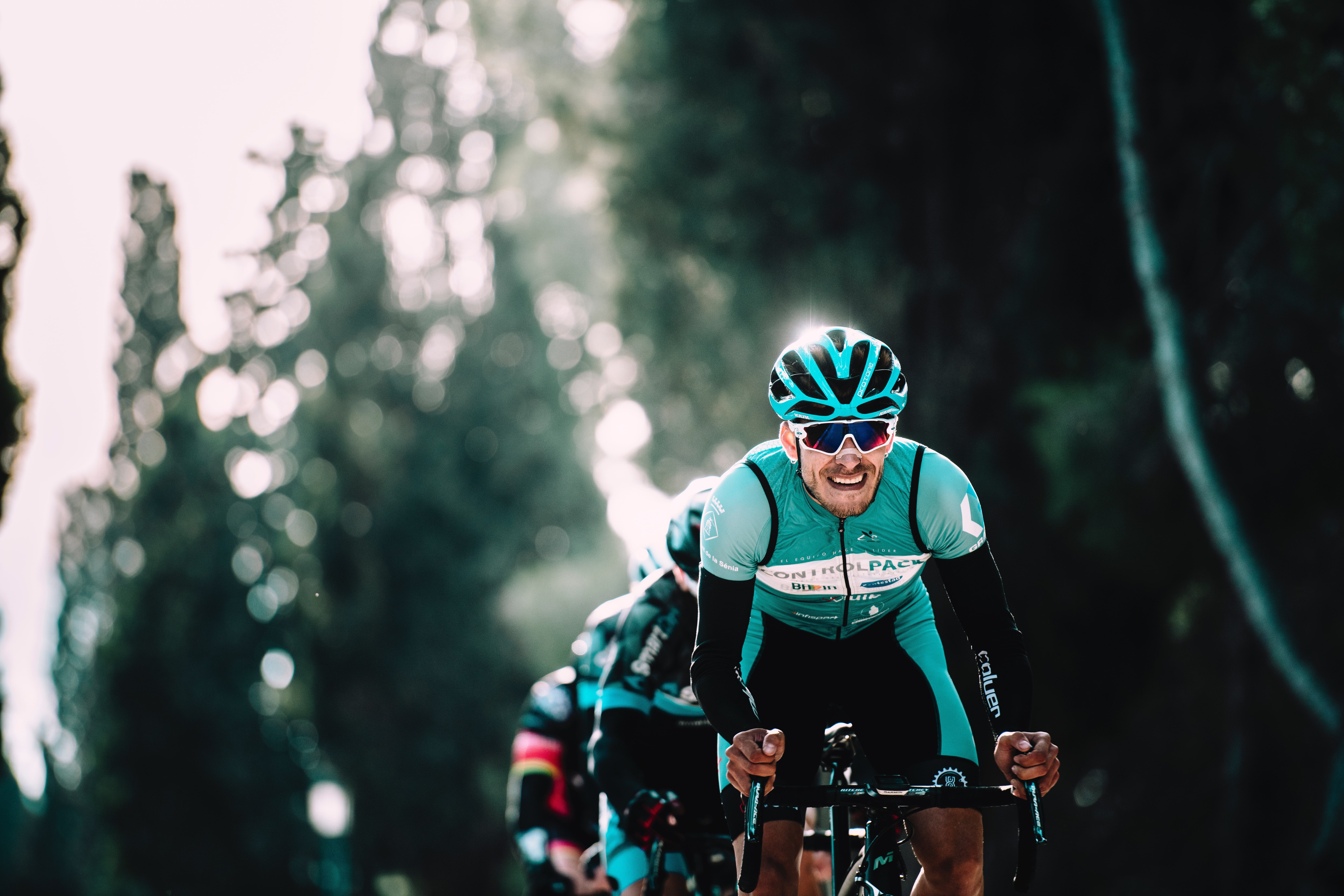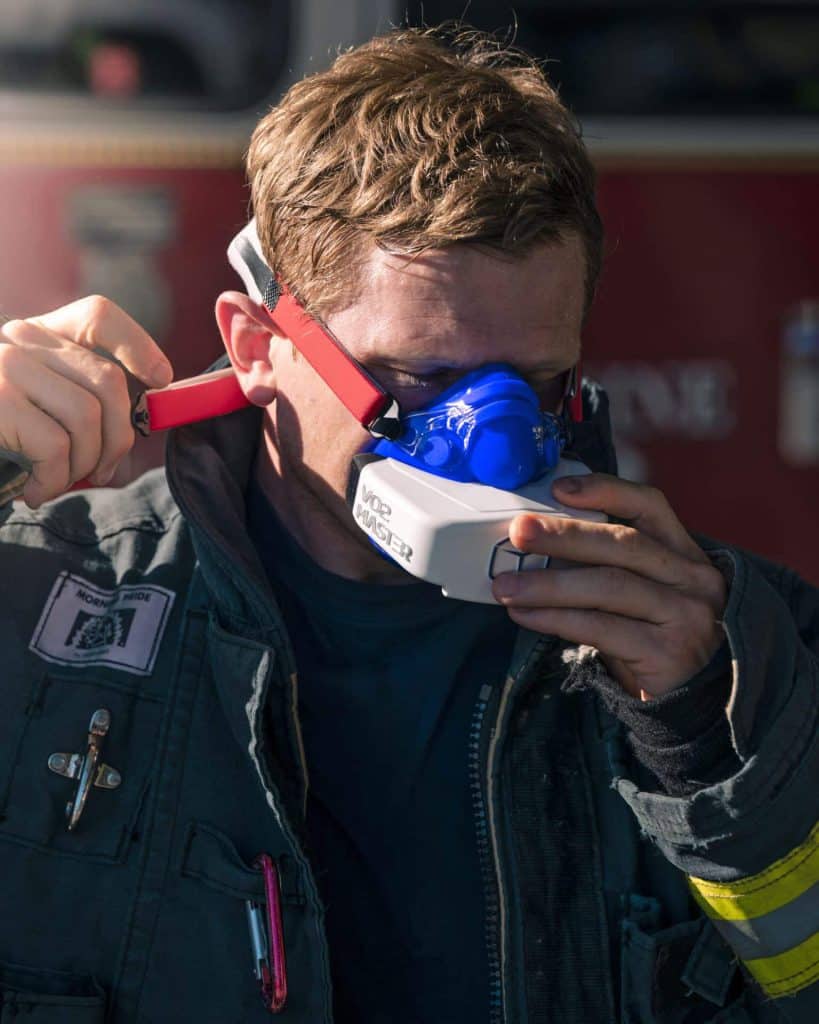Helping Athletes Achieve Their Ambitions
Train.Red—a world leader in scientific, wearable (f)NIRS equipment—is excited to announce that it will be collaborating with VO2 Master. Joining forces will lead to great opportunities, not only for each company, but especially for our valued customers. Read on for details! Helping Athletes Achieve Their Ambitions Data can make a difference. Implementing multiple technologies thatContinue reading "Helping Athletes Achieve Their Ambitions"

Train.Red—a world leader in scientific, wearable (f)NIRS equipment—is excited to announce that it will be collaborating with VO2 Master. Joining forces will lead to great opportunities, not only for each company, but especially for our valued customers. Read on for details!
Helping Athletes Achieve Their Ambitions
Data can make a difference. Implementing multiple technologies that measure related physiological principles in one interface, will increase usability and simplify the analysis afterwards.
The focus is to improve any athlete, but how can the two technologies strengthen each other?
How to perform better
When looking at VO2 (the amount of oxygen consumed by the body) as a measurement to indicate performance, there are two simple ways to determine your current physiologic performance:
- Your maximal oxygen consumption (VO2max).
- The duration that can be sustained at a given measurable output speed (e.g., speed, wattage, etc.)
Therefore, if you want to perform better, you need to do one of two things:
- Increase your VO2max.
- Increase the time you are able to perform at any given percentage of your VO2max.
Your body needs more than just slow and steady base work to improve performance. To understand the benefits of implementing threshold and tempo sessions early in one’s program, we need to realize there is more that drives our performance than our heart and our lungs—namely, our muscles.
Understand your oxygen consumption
If we want to improve our VO2max or improve the duration an athlete can perform at a given intensity, we should understand the components of this metric.
What determines how much oxygen we consume every minute?
A theoretical approach of our VO2 is the so-called ‘Fick Principle,’ named after Adolf Eugen Fick (1829-1901). In his first iteration of the method, Fick calculated the blood flow to the entire body, based on the oxygen consumption and the oxygen contents in the arterial and venous blood.
Fick stated that the amount of consumed oxygen is equal to the cardiac output multiplied by the oxygen content of the arterial blood less the cardiac output multiplied by the oxygen content of the venous blood.
VO2 = (CO x Ca) – (CO x Cv)
or
VO2 = CO x (a-v)O2
The cardiac output is dependent on the stroke rate and the stroke volume of our heart; the arterial concentration is dependent on the efficiency of the lungs in transferring the oxygen from the air to the blood. On the other hand, the venous concentration is highly dependent on the intensity at which your body is working and your muscles’ ability to draw oxygen from the blood.
If your muscles are very active, they need more oxygen to create ATP. And your venous oxygen concentration will decrease with respect to a resting state because the muscle cells extract the oxygen out of the vascular system.
If you can improve the functionality or efficiency of a muscle, that muscle will need less oxygen, resulting in a higher venous oxygen concentration and thus a lower VO2. Therefore, you will be able to perform the same amount of work at a lower percentage of your VO2max.
Knowing how hard specific parts of your body are working thus provides significant insight into the amount of oxygen your body needs.
Clearly, muscle proton release was greater than lactate release, with the difference increasing with increases in exercise intensity with an almost twofold greater proton to lactate release at exhaustion.
This is how Train.Red sensors can help
Train.Red offers the equipment to monitor exactly how hard your muscle is working: the monitoring of local muscle oxygenation in a non-invasive way.
Train.Red is a corporate spin-off from Artinis Medical Systems B.V., the world leader in scientific, wearable (functional)Near Infra-Red Spectroscopy, (f)NIRS, equipment and creator of the current golden standard device. With NIRS we can quantify the relative changes in oxy and deoxyhemoglobin concentration and derive the oxygenated saturation in your muscle tissue. This is an established technique that has been enhanced over the past 50 years based on findings from science and research. Train.Red adopted this technology and related knowledge from Artinis and translated it into something that can be used by everyone—not just scientists. We believe that every athlete should be able to fully benefit from clear insight into their own muscles’ potential.
Data is knowledge, but from a user perspective, things can get very unorganized when every wearable has its own application. Therefore, we are happy to share that Train.Red’s biosensors are fully integrated into the VO2 Master Manager application. Simply select the sensor in the device tile and configure the screen as you like.
Want to get technical?
Currently there are two metrics supported by the VO2 Master Manager application: the Tissue Saturation Index (TSI) and the Hemoglobin Difference (HbDiff).
The TSI is a representation of the amount oxygen in the tissue. If you place the sensor on your upper leg, it will tell you the percentage of oxygen on that exact location you’re measuring.
The HbDiff parameter is also a representation of the amount of oxygen in the tissue—provided not as a percentage, but as a relative concentration change. More specifically, it’s the difference between your oxyhemoglobin and deoxyhemoglobin expressed in micromolars. The signal to noise ratio is a bit better for this parameter and it somewhat corrects for the fluctuations in blood flow. However, it is a lot less studied in comparison to the absolute percentage of oxygen (TSI).
The data in practice
When comparing oxygen consumption data from your pulmonary system with oxygen consumption data from your muscles, there is a very high correlation. This is natural since the need of oxygen is one of the key determinants for your lungs’ oxygen uptake.
When looking at the combined data of your respiratory system and your muscles during an incremental exercise test, Guido Vroemen can clearly distinguish similar trends and patterns. Guido is one of our local expert users who combines multiple modalities during his sport medical examinations and exercise test at the Sports Medical Advice Centre, located in Amersfoort.
When looking at the respiratory data of one his MTB athletes, the increment from 330 to 360 Watts showed to have an influence on Ventilatory Equivalents (VE) as well as VO2, which was supported by the Train.Red FYER sensor, which reported a desaturating trend. This breaking point from sustainable to desaturation shows where anaerobic metabolism is no longer in a steady state. The muscles cannot cope with the amount of lactate that is building up, and the need for oxygen becomes bigger. The supply of oxygen, however, is limited, and cannot increase further resulting in a desaturating trend in the TSI trace.
So why do intervals?
A higher VO2max is not reached by simply doing more miles. Incorporating tempo sessions will train your muscles to be more efficient, and thus have a significant impact on your VO2max percentage work.
We’re looking forward to telling you more about the future synergy between the two Train.Red and VO2 Master modalities and hope this integrated set-up can bring you or your athletes to their new personal best.
